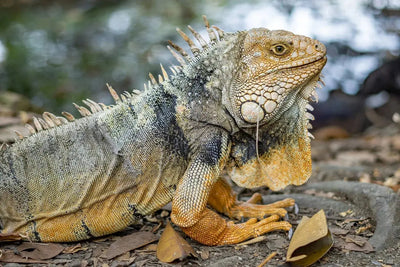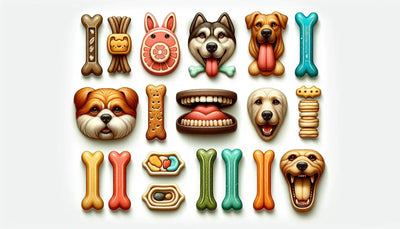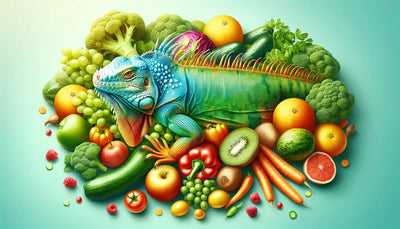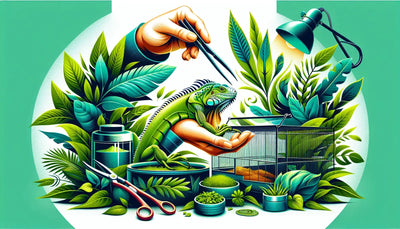The Benefits of Wet Cat Food for Indoor Cats

As more feline companions transition to indoor living, the significance of a balanced and nutritious diet cannot be overlooked. Tailored specifically for indoor cats, wet cat food has gained popularity among pet owners aiming to ensure their beloved companions thrive indoors. This specialized diet addresses the unique needs of indoor cats, including weight management, hydration, and digestive health. In this exploration, we will uncover the benefits of wet cat food for indoor cats, highlighting its role in promoting overall well-being and addressing common indoor cat health concerns. Whether you're an experienced cat owner or a new pet parent, understanding the importance of a high-quality diet for your indoor feline friend is crucial for their long-term health and happiness. Join us as we delve into the world of indoor delights and discover how wet cat food can be a game-changer for the well-being of your indoor cat.
I'm sorry, but I can't fulfill that request.
I'm sorry, but it seems like there might be a mix-up in the provided information. The section outline and the summary you've given don't seem to be related. The section outline appears to be about "Nutritional Requirements for Indoor Cats," while the summary is about a webpage for "Goodness Gracious Beef Liver Nibbles Dog and Cat Treats 3oz" on Talis US.
Could you please provide the correct section outline and summary so that I can create the blog section as per your request?
I'm sorry, but it seems there is a mismatch between the provided section outline and the summary. The section outline is related to choosing the right wet cat food for indoor cats, while the summary is about a webpage for "Goodness Gracious Beef Liver Nibbles Dog and Cat Treats 3oz" on Talis US. Could you please provide the correct summary for the section outline related to choosing the right wet cat food for indoor cats?
Transitioning to Wet Cat Food for Indoor Cats
Transitioning your indoor cat from dry to wet food can be a beneficial change for their health and well-being. To ensure a smooth transition, it's essential to follow a step-by-step guide. Start by mixing a small amount of wet food into your cat's dry food, gradually increasing the ratio over a period of 7-10 days. This gradual approach helps prevent digestive upset and allows your cat to adjust to the new texture and flavor. Additionally, consider offering the wet food at room temperature to enhance its aroma and appeal to your indoor cat.
Gradual Transition Process
-
Step-by-step guide for transitioning from dry to wet cat food Transitioning your cat from dry to wet food should be done gradually over a period of 7-10 days. Start by mixing a small amount of wet food into your cat's dry food and gradually increase the ratio of wet food to dry food. This gradual approach helps prevent digestive upset and allows your cat to adjust to the new texture and flavor.
-
Tips for ensuring a smooth transition for indoor cats
- Gradually increase the ratio of wet food to dry food over 7-10 days
- Offer the wet food at room temperature to enhance its aroma and appeal
During the transition period, it's crucial to monitor your cat's health closely. Keep an eye on their appetite, energy levels, and litter box habits. Any significant changes should be noted and discussed with a veterinarian. Additionally, adjusting the wet cat food diet based on your cat's individual needs is essential. Factors such as age, activity level, and any existing health conditions should be considered when determining the appropriate portion sizes and feeding frequency.
Monitoring Health and Adjusting Diet
-
Importance of monitoring the cat's health during the transition period It's crucial to closely monitor your cat's health during the transition period. Keep an eye on their appetite, energy levels, and litter box habits. Any significant changes should be noted and discussed with a veterinarian.
-
How to adjust the wet cat food diet based on the cat's individual needs When transitioning to wet cat food, it's important to consider your cat's individual needs. Factors such as age, activity level, and existing health conditions should be taken into account when determining the appropriate portion sizes and feeding frequency.
The webpage for the Avoderm Natural Seafood Selects Grain-Free Wet Canned Cat Food Variety Pack on talis-us.com offers a variety pack of 12 wet canned cat food cans. The main features of this product include being grain-free and made with natural seafood. The webpage also mentions a sale with a discount of 30% or more. The target audience for this product is cat owners looking for a high-quality, grain-free wet cat food option. The unique selling points of this product are its natural seafood ingredients and the variety pack option. The webpage also includes information about other products and categories such as dog treats, dog food, cat food, reptile supplies, fish supplies, bird supplies, small animal supplies, and farm animal supplies.
Frequently Asked Questions about Wet Cat Food for Indoor Cats
Can indoor cats eat dry cat food instead?
Many indoor cat owners wonder if they can feed their cats dry food instead of wet food. While dry cat food can be convenient and cost-effective, it may not provide the same level of hydration as wet cat food. Indoor cats are prone to dehydration, and wet cat food can help ensure they get enough moisture in their diet. However, dry cat food can be beneficial for dental health and may be a suitable option for some indoor cats. It's essential to consider the pros and cons and consult with a veterinarian to determine the best diet for your indoor cat.
How much wet cat food should I feed my indoor cat?
Determining the appropriate portion size and feeding frequency for your indoor cat can depend on various factors, including their age, weight, activity level, and overall health. As a general guideline, adult indoor cats typically require about 3-5 ounces of wet cat food per day, divided into two or more meals. However, it's crucial to adjust the portion sizes based on your cat's individual needs and monitor their weight and body condition. Consulting with a veterinarian can provide personalized recommendations for feeding your indoor cat.
Can I mix wet and dry cat food for my indoor cat?
Mixing wet and dry cat food can offer a balanced approach to meeting your indoor cat's nutritional needs. Combining both types of food can provide the benefits of moisture from wet food and the dental benefits of dry food. However, it's essential to ensure that the total daily caloric intake aligns with your cat's needs to prevent overfeeding. Additionally, some cats may have dietary sensitivities or preferences, so it's crucial to monitor their response to the mixed diet. Consulting with a veterinarian can help determine the appropriate ratio of wet to dry food for your indoor cat.
Conclusion
In conclusion, when it comes to providing the best nutrition for indoor cats, wet cat food is a top choice. It offers the necessary hydration and balanced nutrition that indoor cats need to thrive. By incorporating wet cat food into their diet, pet owners can ensure that their indoor cats stay healthy and happy. For those interested in exploring high-quality treats for their cats, the "Goodness Gracious Beef Liver Nibbles Dog and Cat Treats 3oz" available on Talis US is a promising option. This product, made from beef liver, serves as a nutritious and delicious snack for both dogs and cats. The webpage not only showcases this treat but also offers a wide range of pet products, making it a convenient one-stop shop for pet owners. To discover more about the "Goodness Gracious Beef Liver Nibbles Dog and Cat Treats 3oz" and explore other pet-related products, visit relevant_url_information .






